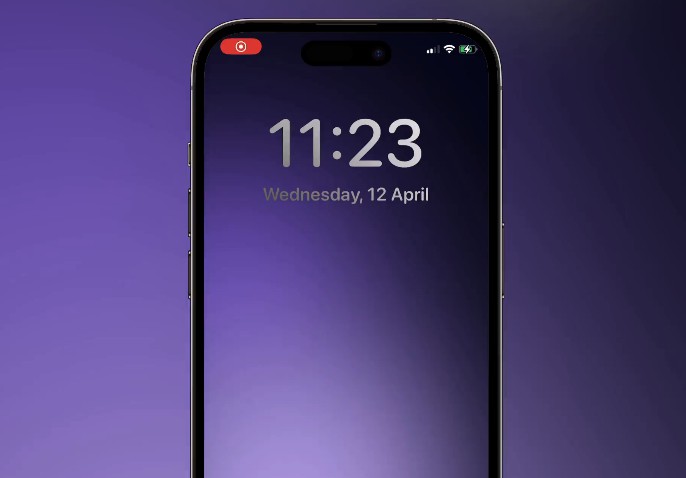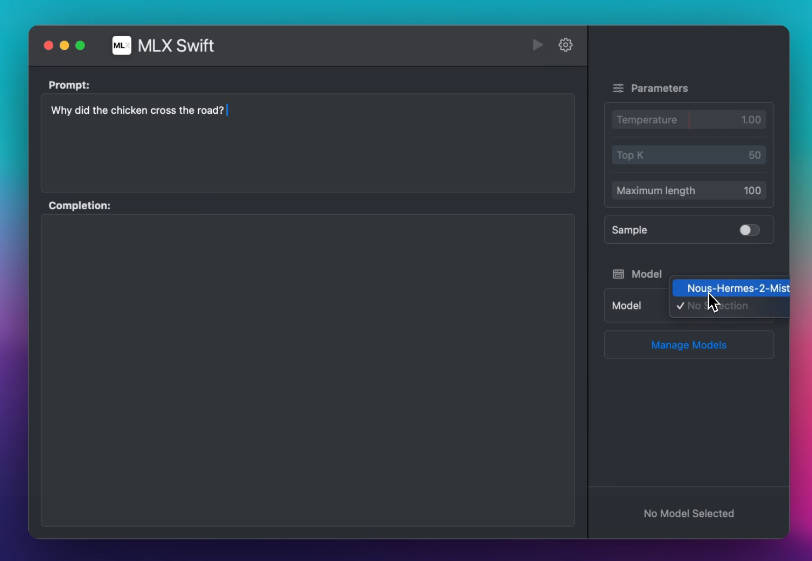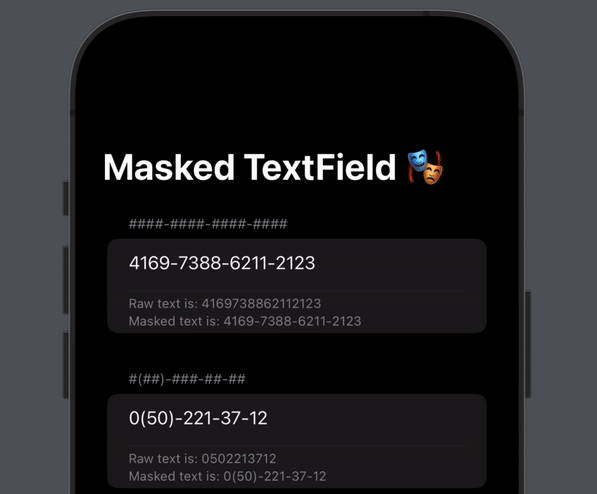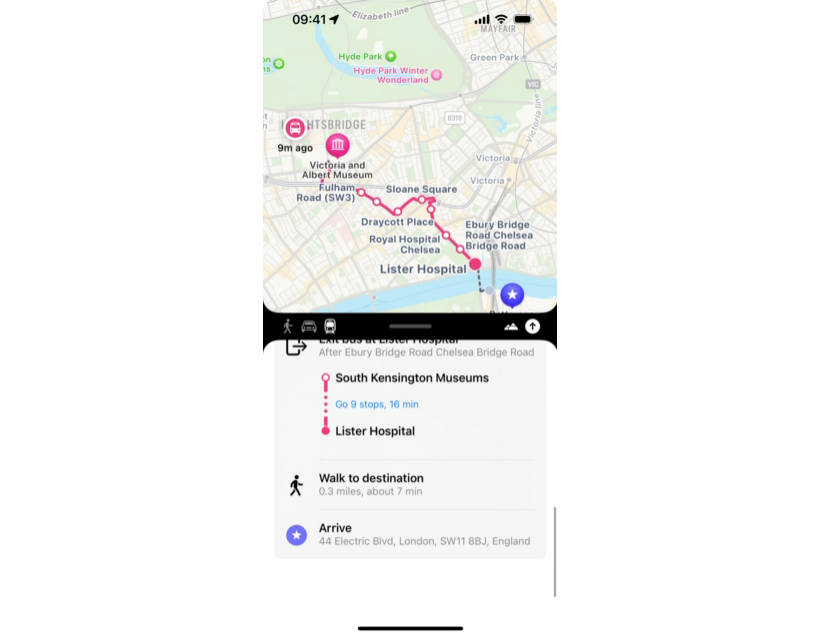Queryable – Asynchronous View Presentations in SwiftUI
Queryable is a property wrapper that can trigger a view presentation and await its completion from a single async function call, while fully hiding the state handling of the presented view.
import SwiftUI
import Queryable
struct ContentView: View {
@Queryable<Void, Bool> var buttonConfirmation
var body: some View {
Button("Commit", action: confirm)
.queryableAlert(controlledBy: buttonConfirmation, title: "Really?") { item, query in
Button("Yes") { query.answer(with: true) }
Button("No") { query.answer(with: false) }
} message: {_ in}
}
@MainActor
private func confirm() {
Task {
do {
let isConfirmed = try await buttonConfirmation.query()
// Do something with the result
} catch {}
}
}
}
Not only does this free the presented view from any kind of context (it simply provides an answer to the query), but you can also pass buttonConfirmation down the view hierarchy so that any child view can conveniently trigger the confirmation without needing to deal with the actually displayed UI. It works with alerts, confirmationDialogs, sheets, fullScreenCover and fully custom overlays.
Installation
Queryable supports iOS 15+, macOS 12+, watchOS 8+ and tvOS 15+.
In Swift Package
Add the following line to the dependencies in your Package.swift file:
.package(url: "https://github.com/SwiftedMind/Queryable", from: "1.0.0")
In Xcode project
Go to File > Add Packages... and enter the URL “https://github.com/SwiftedMind/Queryable” into the search field at the top right. Queryable should appear in the list. Select it and click “Add Package” in the bottom right.
Usage
To use, simply import the Queryable target in your code.
import SwiftUI
import Queryable
struct ContentView: View {
@Queryable<Void, Bool> var buttonConfirmation
/* ... */
}
Get Started
To best explain what Queryable does, let’s look at an example. Say we have a button whose action needs a confirmation by the user. The confirmation should be presented as an alert with two buttons.
Usually, you would implement this in a way similar to the following:
import SwiftUI
struct ContentView: View {
@State private var isShowingConfirmationAlert = false
var body: some View {
Button("Do it!") {
isShowingConfirmationAlert = true
}
.alert(
"Do you really want to do this?",
isPresented: $isShowingConfirmationAlert
) {
Button("Yes") { confirmAction(true) }
Button("No") { confirmAction(false) }
} message: {}
}
@MainActor private func confirmAction(_ confirmed: Bool) {
print(confirmed)
}
}
The code is fairly simple. We toggle the alert presentation whenever the button is pressed and then call confirmAction(_:) with the answer the user has given. There’s nothing wrong with this approach, it works perfectly fine.
However, I believe there is a much more convenient way of doing it. If you think about it, triggering the presentation of an alert and waiting for some kind of result – the user’s confirmation in this case – is basically just an asynchronous operation. In Swift, there’s a mechanism for that: Swift Concurrency.
Wouldn’t it be awesome if we could simply await the confirmation and get the result as the return value of a single async function call? Something like this:
import SwiftUI
struct ContentView: View {
// Some property that takes care of the view presentation
var buttonConfirmation: /* ?? */
var body: some View {
Button("Do it!") {
confirm()
}
.alert(
"Do you really want to do this?",
isPresented: /* ?? */
) {
Button("Yes") { /* ?? */ }
Button("No") { /* ?? */ }
} message: {}
}
@MainActor private func confirm() {
Task {
do {
// Suspend, show the alert and resume with the user's answer
let isConfirmed = try await buttonConfirmation.query()
} catch {}
}
}
}
The idea is that this query() method would suspend the current task, somehow toggle the presentation of the alert and then resume with the result, all without us ever leaving the scope. The entire user interaction with the UI is contained in this single line.
And that is exactly what Queryable does. It’s a property wrapper that you can add within any SwiftUI View to control view presentations from asynchronous contexts. Here’s what it looks like:
import SwiftUI
import Queryable
struct ContentView: View {
// Since we don't need to provide data with the confirmation, we pass `Void` as the Input.
// The Result type should be a Bool.
@Queryable<Void, Bool> var buttonConfirmation
var body: some View {
Button("Commit") {
confirm()
}
.queryableAlert( // Special alert modifier whose presentation is controller by a Queryable
controlledBy: buttonConfirmation,
title: "Do you really want to do this?"
) { item, query in
// The provided query type lets us return a result
Button("Yes") { query.answer(with: true) }
Button("No") { query.answer(with: false) }
} message: {_ in}
}
@MainActor
private func confirm() {
Task {
do {
let isConfirmed = try await buttonConfirmation.query()
// Do something with the result
} catch {}
}
}
}
In my opinion, this looks and feels much cleaner and a lot more convenient. As a bonus, we can now reuse the alert for all kinds of things, since it doesn’t know anything about its context.
Note
It is your responsibility to make sure that every query is answered at some point (unless cancelled, see below). Failing to do so will cause undefined behavior and possibly crashes. This is because
QueryableusesContinuationsunder the hood.
Passing Down The View Hierarchy
Another interesting thing you can do with Queryable is pass it down the view hierarchy. In the following example, MyChildView has no idea about the alert from ContentView, but it still can query a confirmation and receive a result. If you later swap out the alert for a confirmationDialog in ContentView, nothing changes for MyChildView.
import SwiftUI
import Queryable
struct MyChildView: View {
// Passed from a parent view
var buttonConfirmation: Queryable<Void, Bool>.Trigger
var body: some View {
Button("Confirm Here Instead") {
confirm()
}
}
@MainActor
private func confirm() {
Task {
do {
// This view has no idea how the confirmation is obtained. It doesn't need to!
let isConfirmed = try await buttonConfirmation.query()
// Do something with the result
} catch {}
}
}
}
Providing an Input Value
In the examples above, we’ve used Void as the generic Input type for Queryable, since the confirmation alert didn’t need it. But we can pass any value type we want.
For example, let’s say we want to present a sheet on which the user can create a new PlayerItem that we then save in a database (or send to a backend). By querying with an input of type PlayerItem, we can provide the PlayerEditor view with data to pre-fill some of the inputs in the form.
struct PlayerItem {
var name: String
/* ... */
static var draft: PlayerItem {/* ... */}
}
struct PlayerListView: View {
@Queryable<PlayerItem, PlayerItem> var playerCreation
var body: some View {
/* ... */
.queryableSheet(controlledBy: playerCreation) { playerDraft, query in
PlayerEditor(draft: playerDraft, onCompletion: { player in
query.answer(with: player)
})
}
}
@MainActor
private func createPlayer() {
Task {
do {
let createdPlayer = try await buttonConfirmation.query(with: PlayerItem.draft)
// Store player in database, for example
} catch {}
}
}
}
This can be incredibly handy.
Cancelling Queries
There are a few ways an ongoing query is cancelled.
- You call the
cancel()method on theQueryableproperty, for instancebuttonConfiguration.cancel(). - The
Taskthat calls thequery()method is cancelled. When this happens, the query will automatically be cancelled and end the view presentation. - The view is dismissed by the system or the user (by swiping down a sheet, for example). The
Queryablewill detect this and cancel any ongoing queries. - A new query is started while another one is ongoing. This will either cancel the new one or the ongoing one, depending on the specified conflict policy.
In all of the above cases, a QueryCancellationError will be thrown.
Handling Conflicts
If you try to start a query while another one is already ongoing, there will be a conflict. The default behavior in that situation is for the previous query to be cancelled. You can alter that by specifying a QueryConflictPolicy for you Queryable, like so:
@Queryable<Void, Bool>(queryConflictPolicy: .cancelNewQuery) var buttonConfirmation
@Queryable<Void, Bool>(queryConflictPolicy: .cancelPreviousQuery) var otherButtonConfirmation
Supported Queryable Modifiers
Currently, these are the view modifiers that support being controlled by a Queryable:
queryableAlert(controlledBy:title:actions:message)queryableConfirmationDialog(controlledBy:title:actions:message)queryableFullScreenCover(controlledBy:onDismiss:content:)queryableSheet(controlledBy:onDismiss:content:)queryableOverlay(controlledBy:animation:alignment:content:)queryableClosure(controlledBy:block:)
License
MIT License
Copyright (c) 2023 Dennis Müller and all collaborators
Permission is hereby granted, free of charge, to any person obtaining a copy of this software and associated documentation files (the “Software”), to deal in the Software without restriction, including without limitation the rights to use, copy, modify, merge, publish, distribute, sublicense, and/or sell copies of the Software, and to permit persons to whom the Software is furnished to do so, subject to the following conditions:
The above copyright notice and this permission notice shall be included in all copies or substantial portions of the Software.
THE SOFTWARE IS PROVIDED “AS IS”, WITHOUT WARRANTY OF ANY KIND, EXPRESS OR IMPLIED, INCLUDING BUT NOT LIMITED TO THE WARRANTIES OF MERCHANTABILITY, FITNESS FOR A PARTICULAR PURPOSE AND NONINFRINGEMENT. IN NO EVENT SHALL THE AUTHORS OR COPYRIGHT HOLDERS BE LIABLE FOR ANY CLAIM, DAMAGES OR OTHER LIABILITY, WHETHER IN AN ACTION OF CONTRACT, TORT OR OTHERWISE, ARISING FROM, OUT OF OR IN CONNECTION WITH THE SOFTWARE OR THE USE OR OTHER DEALINGS IN THE SOFTWARE.








